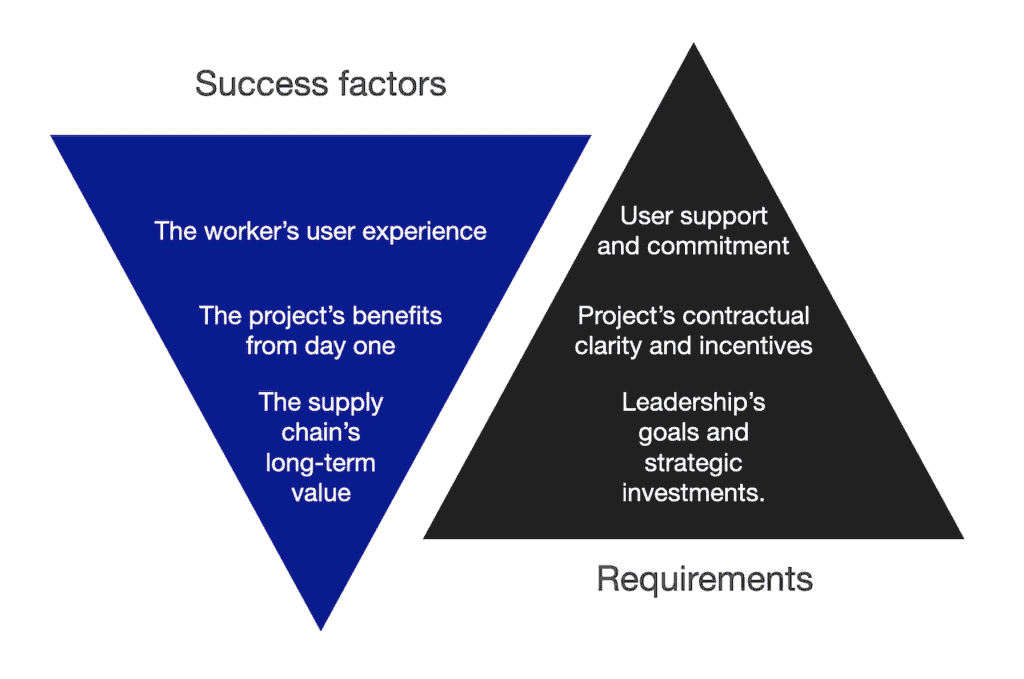A recent Causeway Insights 2023 report is an exciting read. It examines how UK construction uses digital solutions for efficiency, integration, and sustainability. The report highlights contractors’ expectations for digitalization and details the roadblocks they’re facing.
The report inspired me to think about how to digitalize any construction project, the success factors, and how to achieve them.
Three success factors
We typically think of digitalization starting from high-level business goals: budgeting, scheduling, and meeting the client’s requirements. What if we thought “backward,” starting from an individual worker?
Regardless of all the machines we have, the project’s success culminates in workers’ ability to be productive. That’s why the first success factor is the user experience of the worker. Make the person using the digital solution feel they are in control, get the information they need when needed, and free them from unnecessary bureaucracy.
The second success factor is that digitalized workflows start when the project begins. That way, every project stakeholder gets value from digitalization from day one, which motivates them to use digital solutions systematically.
The third success factor is the readiness of the whole value chain to provide and receive value in the digitalized process. This encourages the stakeholders to look beyond an individual project and constantly hone their digital capabilities.
Three requirements
The requirements start from the other direction: the company leaders. They should educate themselves on the opportunities of technology and use technology strategically.
Company leaders must ensure that the digital solutions are interoperable within the firm and across the value chain. This is possible by choosing solutions that allow automated data flow with standards and digital platforms.
The second requirement applies to projects. They must have contractual clarity regarding digital workflows, shared goals, and incentives. In addition, all the technology and connectivity must be in place when the project starts. The project also needs an information coordinator. Could BIM coordinators take that role in the future?
The third requirement concerns individual workers. They should receive proper instruction and ongoing assistance. Employees must be as dedicated to utilizing digital abilities as any other tool at the job site.
If we start building our digital capabilities to enable the success factors, we’ve come a long way in getting real value out of digitalization.
You can download the Causeway report on their website.


